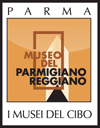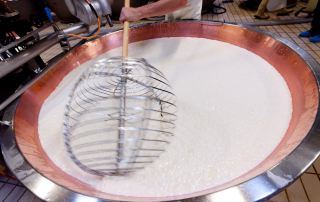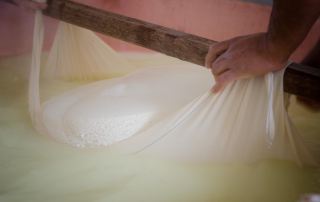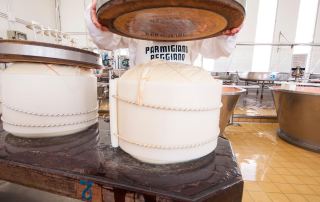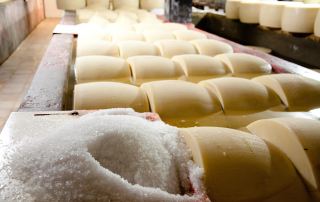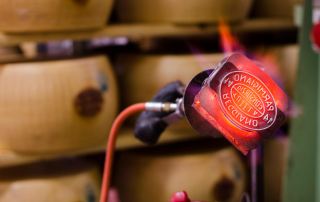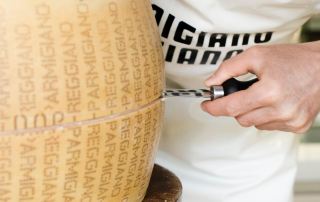Making of Parmigiano Reggiano
Parmigiano Reggiano is made according to traditional methods.
Unlike other famous cheese, Parmigiano Reggiano cannot be industrially produced; in the words of the advertisement ‘it is formed’ only by the expert hands of the cheese master carrying out the same artisan method as has been done for centuries.
The only difference between a Parmigiano Reggiano of the XIII century and one today is in quality control, which, thanks to the Consortium of safeguard ensuring the highly prized D.O.P. denomination, checks that the rigid methods of production have been respected. The milk cows from the typical zone of Parmigiano-Reggiano are fed exclusively on forage coming from pasturelands in the selected zone. Highly scented and rich in vital food, the forage is the first element which distinguishes this cheese.
The transformation of milk, as in a ritual, follows with precision ancient and unchanging rules.
The milk placed in the cauldron, is heated to the correct temperature. The cheese is formed with the addition of a whey starter and rennet, two absolutely natural elements. Nothing else is added. Once the curds have been broken and cooked, the resulting mass, removed from the cauldron using a large piece of material is placed in cylindrical wooden shapes which, as well as shaping the cheese give it the first branding mark.
The form thus obtained is placed in a bath of salt water where, as a result of the saline solution, it eliminates excess water and absorbs a small amount of salt. Common table salt is used and this is the only element added to making the cheese.
The form of cheese is then taken to the spectacular maturing stores where it will rest for up to 24 months.
Half way through this period, at around 12 months, inspectors from the Consortium check the form: if it presents all the characteristics of suitability it will receive the firebrand mark.
In the meantime the cheese continues to mature. Unlike other cheese the total absence of preserving agents does not block the natural process of transformation within the cheese. Almost as though the milk has continued to live in another dimension… This allows the cheese to reach maturity with a wealth of substances, aromas and scents of incomparable quality.
At the moment the cheese presents itself in forms of between 33-35 kg, a hard cheese, uniform, finely grained (hence the nickname ‘grana’), lightly straw coloured, with an exquisite and unmistakeable taste and scent.
Ancient working by wood
picture taken from the Archives of the Consortium of Parmigiano Reggiano
Parmigiano Reggiano cheese when vacuum packed can be conserved for long periods in the fridge at a temperature of between 4-8 degrees. In pieces not prepared in this way, it can still be kept in the fridge but for shorter periods in the special glass cheese containers that can be bought anywhere. Periodically you should check the state of the cheese.
The characteristics of this famous cheese are thus described by the famous Lombard historian, Carlo Besana (1849-1929): “It has a granular structure, easy to break off and grate, it has many little eyes or vacuums regularly placed; it is often stringy, that is when you break off pieces you can see filaments of viscous material which follow the piece until they break. The odour is pleasant and aromatic, piquant but not exaggeratedly so. The rind is quite hard.”


